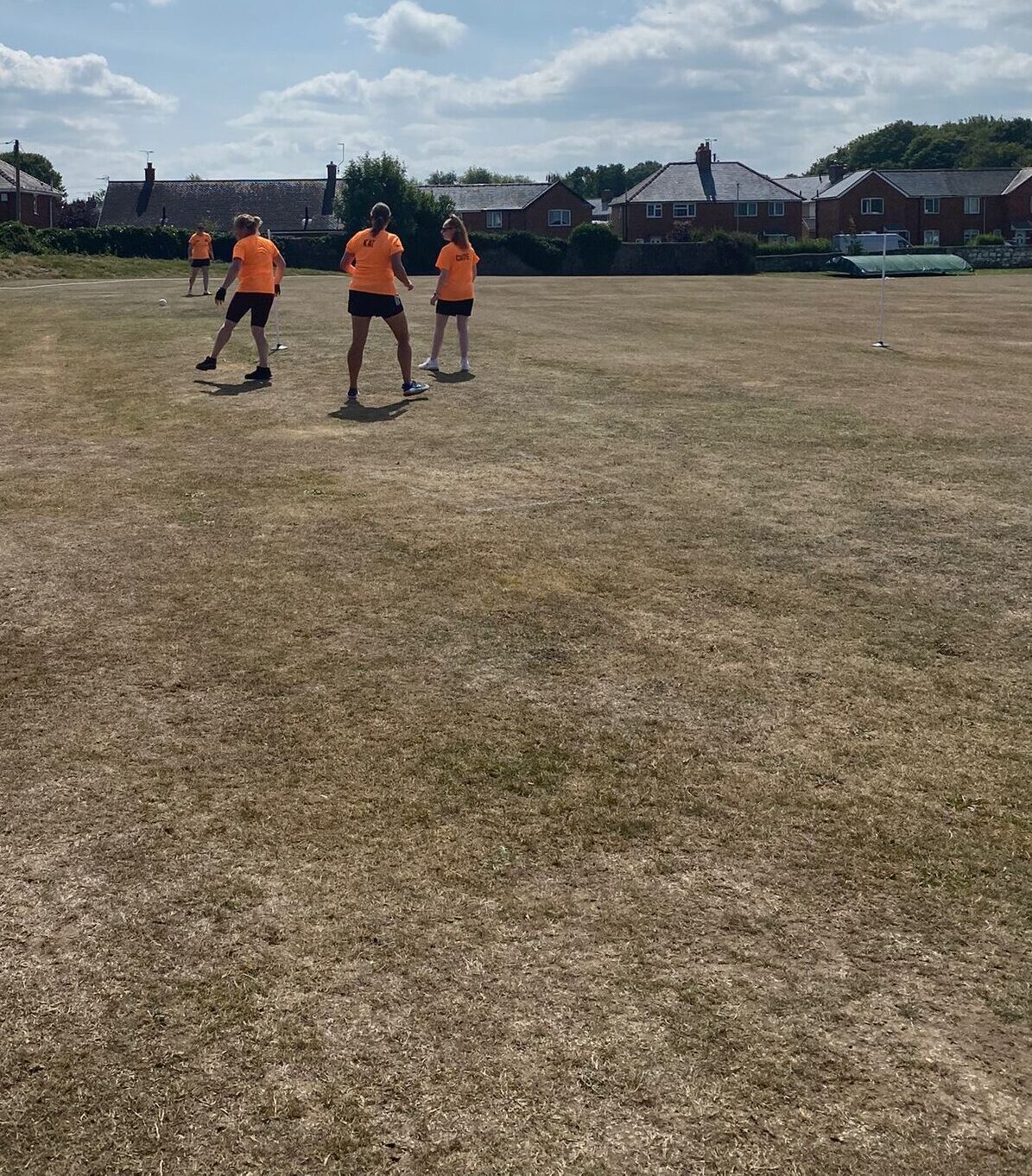Keeping Pitches Green
Resilient Pitch Care for a Hotter UK Summer
As the UK faces our fourth summer heatwave this year, hotter, drier summers are becoming the norm. Sports clubs must rethink how they maintain their pitches to be green. Sustainable pitch care is essential- not just for playability, but for conserving resources and building climate resilience.
1. Turf
Traditional turf grasses often struggle under heat stress and limited water. Switching to drought-tolerant species can significantly reduce water demand and improve pitch durability.
- The Recommended Grass and Clover List (RGCL) includes varieties like AberTorch, Barwave, and AberZeus, which are rigorously tested for drought resistance and disease tolerance.
- Consider hybrid/artificial turf where feasible (Sports Pitches blog).
- Don’t mow your turf too short as can make it more vulnerable & weaken the grass.
- Include native plant borders, these support biodiversity and require less maintenance.
- Allow for shaded areas. Turf grass require four to six hours of full sun each day to grow well. Too much shade can stop growth, but also too much sun can cause sun burn. Create shade by planting trees around the borders or have portable shade e.g. sail shade.
2. Install Smart Irrigation and Water Management Systems
Efficient watering is essential during droughts. Smart irrigation systems help clubs use water wisely:
- The Grounds Management Association (GMA) promotes best practices in pitch irrigation, including moisture sensors and automated systems.
- Rainwater harvesting: using water butts or underground tanks, can reduce reliance on mains water and lower carbon emissions.
- Water during cooler hours (early morning or late evening) to minimise evaporation.
3. Improve Soil Health with Organic Treatments
Healthy soil retains moisture better and supports resilient turf. Organic soil conditioners offer a sustainable alternative to synthetic fertilisers:
- Green manures like clover, vetch, and grazing rye improve soil structure, reduce nutrient leaching, and add organic matter.
- These treatments support biodiversity and reduce the need for chemical inputs.
4. Access Support and Funding for Sustainable Maintenance
Sustainable pitch care is increasingly supported by national initiatives:
- The Football Foundation’s Grass Pitch Maintenance Fund offers six-year tapered grants for clubs to enhance or sustain pitch quality using environmentally sound practices.
5. Reduce Chemical Dependency
Heat-stressed pitches are often treated with chemicals, but there are greener alternatives:
- Use natural pest control methods, such as beneficial insects or organic sprays.
- Adopt integrated turf management practices that balance mechanical, biological, and chemical inputs.
- Monitor turf health proactively to prevent issues before they require intervention.
This protects local ecosystems and reduces pollution.
Conclusion: Sustainability Starts at Ground Level
By adopting sustainable pitch maintenance practices, sports clubs can reduce their environmental impact, save money, and ensure their grounds remain playable, even in extreme weather. Climate resilience begins beneath the surface, and with the right strategies, clubs can lead the way in building a greener future for sport.
References:





